Are you going to mark the milestone of becoming 50? This milestone comes with experience, wisdom and a renewed focus on health. This is also the time when your body begins to undergo significant changes, such as a slower metabolism, hormonal shifts, and an increased risk of weak bones and osteoporosis.
To cope with these changes, you need to focus more on a well-balanced, nutrition-rich diet. Some specific nutrients will help you to cope with such changes and to protect the density of your bones, maintain energy and support vitality. In this article, we will talk about the top five nutrients women over 50 need for strong bones and vitality and how you can include them in your diet.
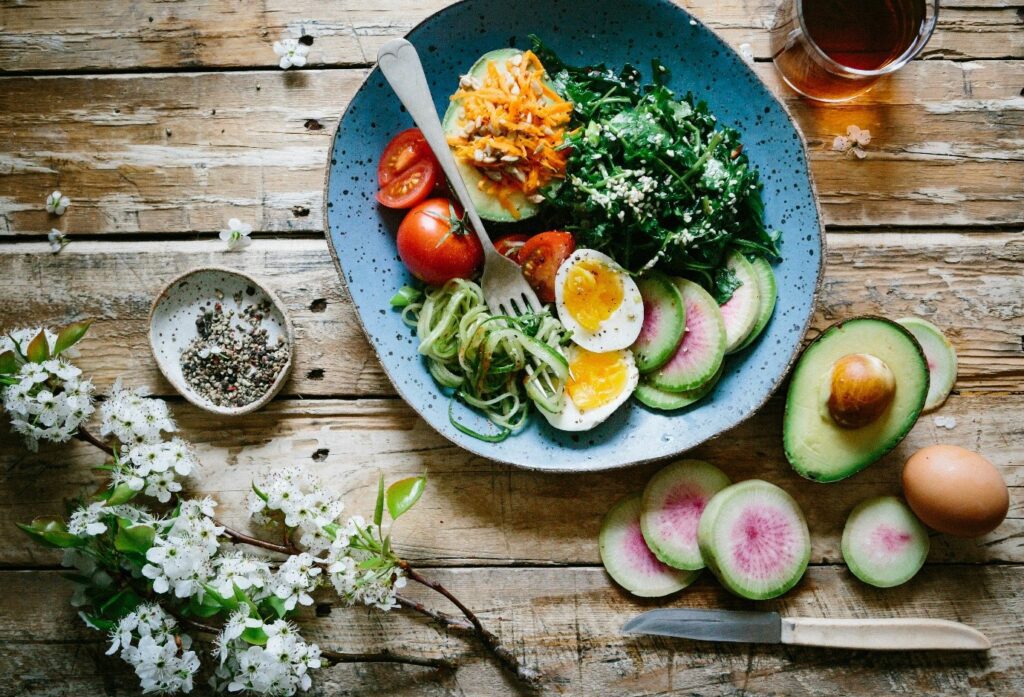
Top 5 Nutrients Women Over 50 Need for Strong Bones and Vitality
Calcium: For Strong and Healthy Bones
Calcium is a crucial nutrient that helps maintain your bone density and strength. Bones start losing calcium after age 30 naturally, but this process speeds up in the middle of your age. During menopause, the production of reproductive hormone, estrogen, declines.
The estrogen hormone plays a significant role in the absorption of calcium into the bones from the diet. The decrease in calcium in your bones makes them weak and brittle, and increases the risk of osteoporosis. Individuals with weak bones are more susceptible to fractures.
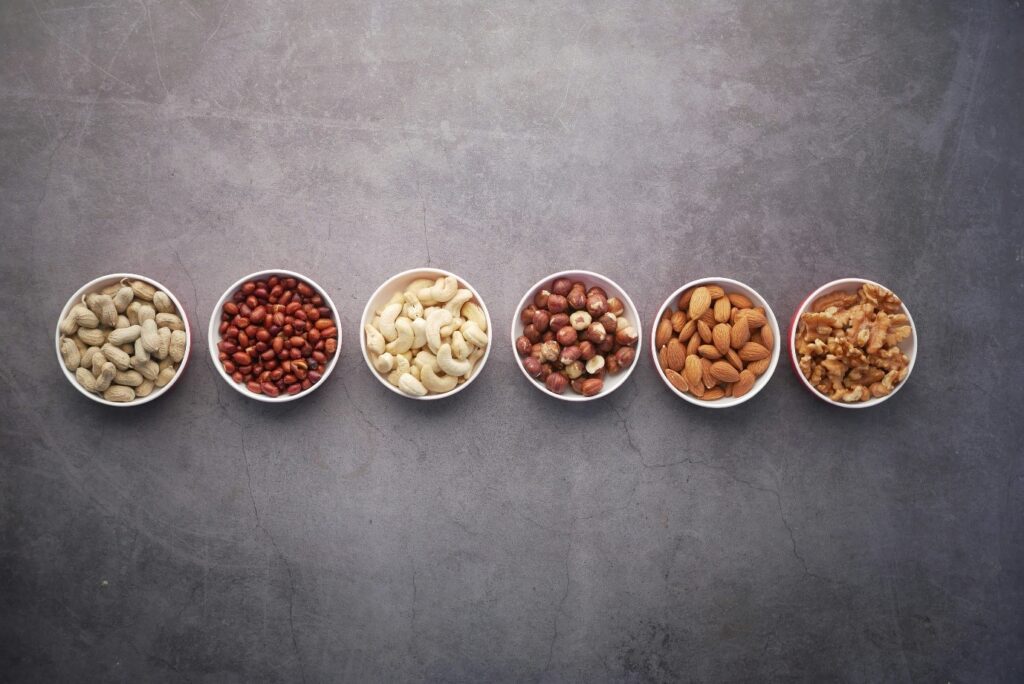
Sources of Calcium
- Vegetables: Green leafy vegetables, kale, broccoli, and collard greens.
- Fruits: Figs, oranges, papayas, blackberries, kiwis, prunes, and dates.
- Seeds and Nuts: Sesame seeds, Brazil nuts, and almonds.
- Grains and Legumes: Whole grains, beans, and lentils.
- Dairy: Milk, cheese, and yoghurt.
- Seafood: Salmon and canned sardines with edible bones.
- Fortified Foods: Almond milk, soy milk, bread, cereals, tofu, fruit juices, and bread.
For optimal calcium absorption, vitamin D plays a crucial role; therefore, it is recommended to consume vitamin D-rich foods and increase safe sun exposure.
It is advised to consume 1,200 mg of calcium per day if you are a woman aged 50 or above.
Vitamin D: Calcium’s Pair for Strong Bones
Vitamin D is crucial for the absorption of Calcium and Phosphorus in the bones. As calcium is the building block of your bones, without Vitamin D, it can not be absorbed by the bones. This will result in low bone density and increase the risk of osteoporosis and bone fractures, especially after the age of 50 (during menopause).
Vitamin D is also necessary for your normal bone growth and remodelling. It ensures that there is an adequate concentration of calcium and phosphate in your blood for normal bone mineralisation. For overall vitality, it reduces inflammation, plays a role in nerve function and has effective immune function. It supports proper muscle movement and function.
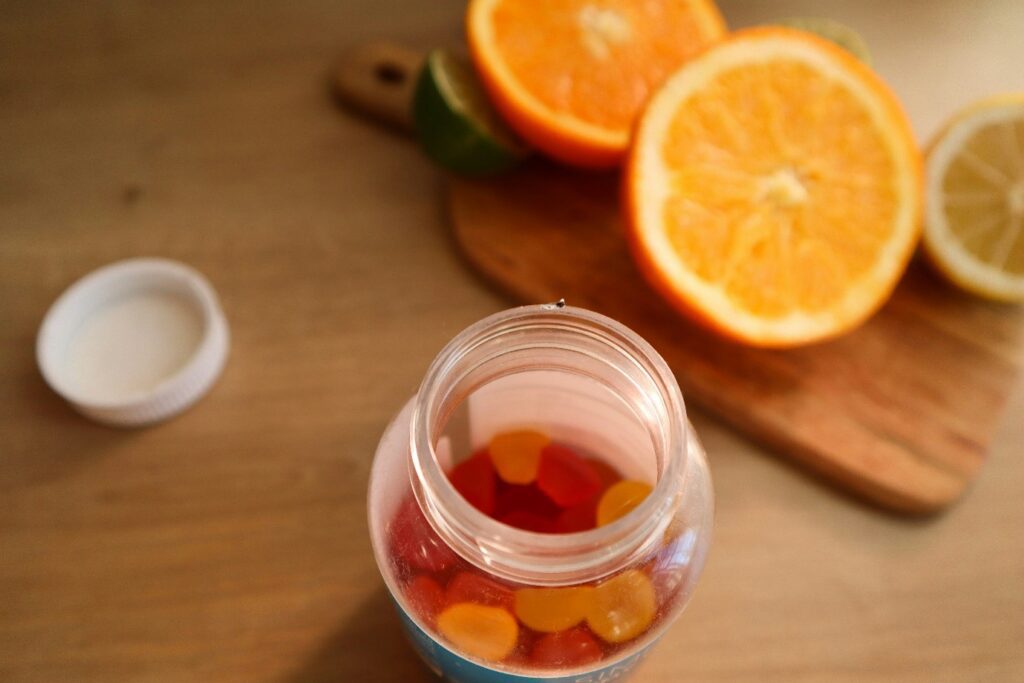
Sources of Vitamin D
- Sun Exposure: Sun exposure (10-20 minutes daily) is the source of Vitamin D. Fortified foods combined with sunlight are needed to meet your daily Vitamin D intake.
- Natural Food Sources: Mushrooms, egg yolks, beef liver, cod liver oil, fatty fish (sardines, mackerel, salmon, and tuna).
- Fortified Foods: Cereals, orange juices, tofu, dairy products (milk and yoghurt), soy milk, almond milk and oat milk.
The recommended intake of Vitamin D for a 50-year-old woman is 600 IU (15 mcg) per day.
Magnesium: Bone Mineralisation
Magnesium is equally important for your bone health, like Calcium and Vitamin D. It works with both Calcium and Vitamin D and ensures proper absorption of Calcium into the bones. It helps in bone mineralisation and maintains a balance for healthy bone remodelling. It also stabilises bone structure by directly influencing the bone crystals.
For overall vitality, it plays a role in the reduction of inflammation, which affects bones and muscles. It is involved in energy-yielding metabolism as it is a cofactor in over 600 enzymatic reactions.
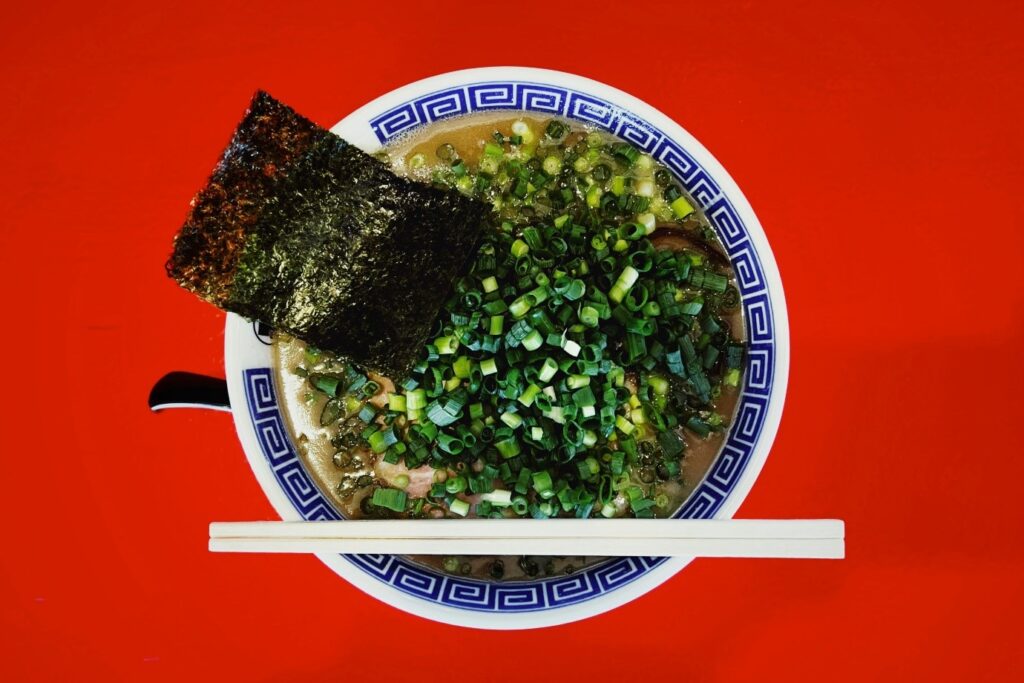
Sources of Magnesium
- Vegetables: Green leafy vegetables, Swiss chard, and spinach.
- Fruits: Avocados, bananas, and dried apricots.
- Seeds and Nuts: Pumpkin seeds, Brazil nuts, almonds, chia seeds, and cashews.
- Grains and Legumes: Whole grains (quinoa, oat bran, and brown rice), beans, and lentils.
- Seafood: Salmon and mackerel.
- Fortified Foods: Cereals and other fortified options.
The recommended intake of Magnesium is 320 mg per day for a woman aged 50.
Protein: Bone and Muscle Strength
Most of your bone tissue’s mass and volume comes from protein. This forms a mesh framework where minerals like calcium are deposited. It also helps in bone mineralisation by stimulating the production of IGF-1 hormone that regulates the activity of osteoblasts (cells that make new bone).
Protein increases your muscle strength, which also supports bone health by preventing falls and the risk of fractures. Deficiency of protein in a 50-year-old woman increases the risk of osteoporosis due to low bone mineral density. It also reduces muscle strength and affects overall vitality and balance.
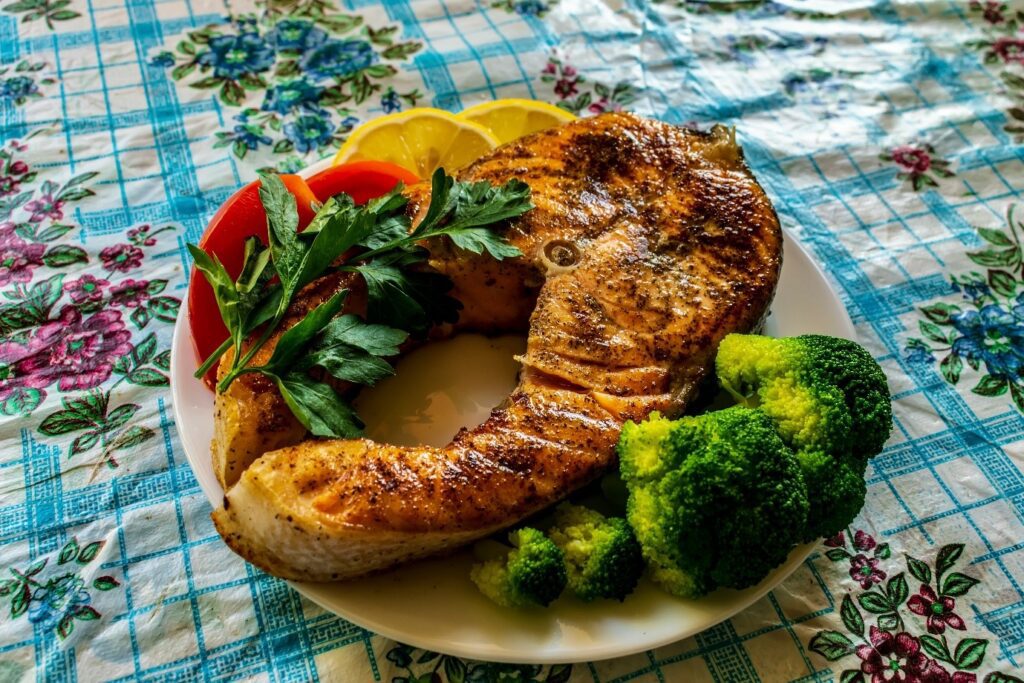
Sources of Protein
- Poultry and Meat: Lean meat, Chicken breasts, and turkey.
- Seafood: Trout, salmon and anchovies.
- Dairy: Yoghurt, cheese, and Milk.
- Grains: Chia seeds and quinoa.
- Seeds and Nuts: Pumpkin seeds, sunflower seeds, walnuts, and almonds.
- Legumes: Lentils, beans (kidney, pinto, black), chickpeas, and peas.
It is recommended to take 0.75 to 1.0 grams of protein per kilogram of body weight daily for a 50-year-old woman.
Omega-3 Fatty Acids: Anti-Inflammatory Bone Protector
Omega-3 fatty acids play a role in bone strength and vitality in middle-aged women by reducing inflammation, improving calcium absorption and inhibiting the breakdown of your bones. They prevent bone decay and improve bone mineralisation. They reduce the inflammatory markers and reduce the risk of osteoporosis.
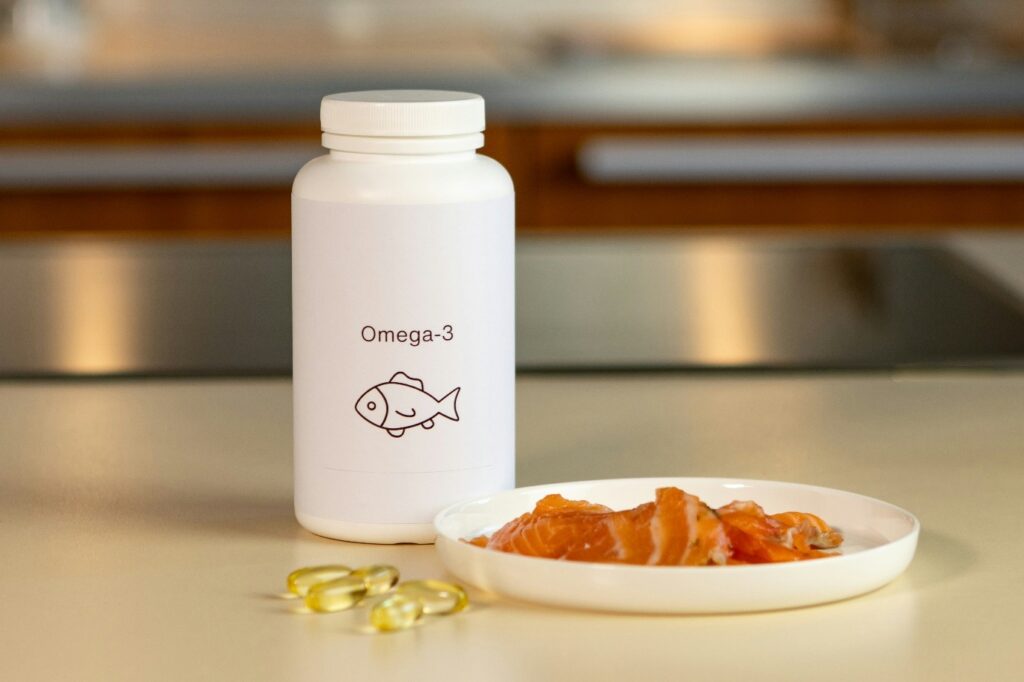
Sources of Omega-3 Fatty Acids
- Seafood: Salmon, sardines, herring, tuna, mackerel, oyster, and mussels.
- Seeds and Nuts: Chia seeds, flaxseeds, and walnuts.
- Oil: Soybean oil, canola oil, and algal oil.
- Vegetables and Fruits: Avocados and green leafy vegetables.
- Fortified Foods: Milk, juices, eggs, cheese, and yoghurt.
The recommended intake of Omega-3 fatty acids for women aged 50 and over is 1100 mg per day.
Key Takeaways
- Calcium is the most vital nutrient for bone health. It reduces the risk of osteoporosis and fractures in and after middle age.
- Calcium has to be paired with Vitamin D as it assists the absorption of calcium into the bones.
- Magnesium also works with calcium and vitamin D to increase bone density and strength.
- Protein is an important nutrient to preserve your muscle mass and to support your bones.
- Good fats – omega-3 fatty acids reduce inflammation and protect your bones.
- A balanced, nutrition-rich diet is the best source of these nutrients, but in some cases, supplements are also advised by doctors depending upon the deficiency and your daily intake of these nutrients.
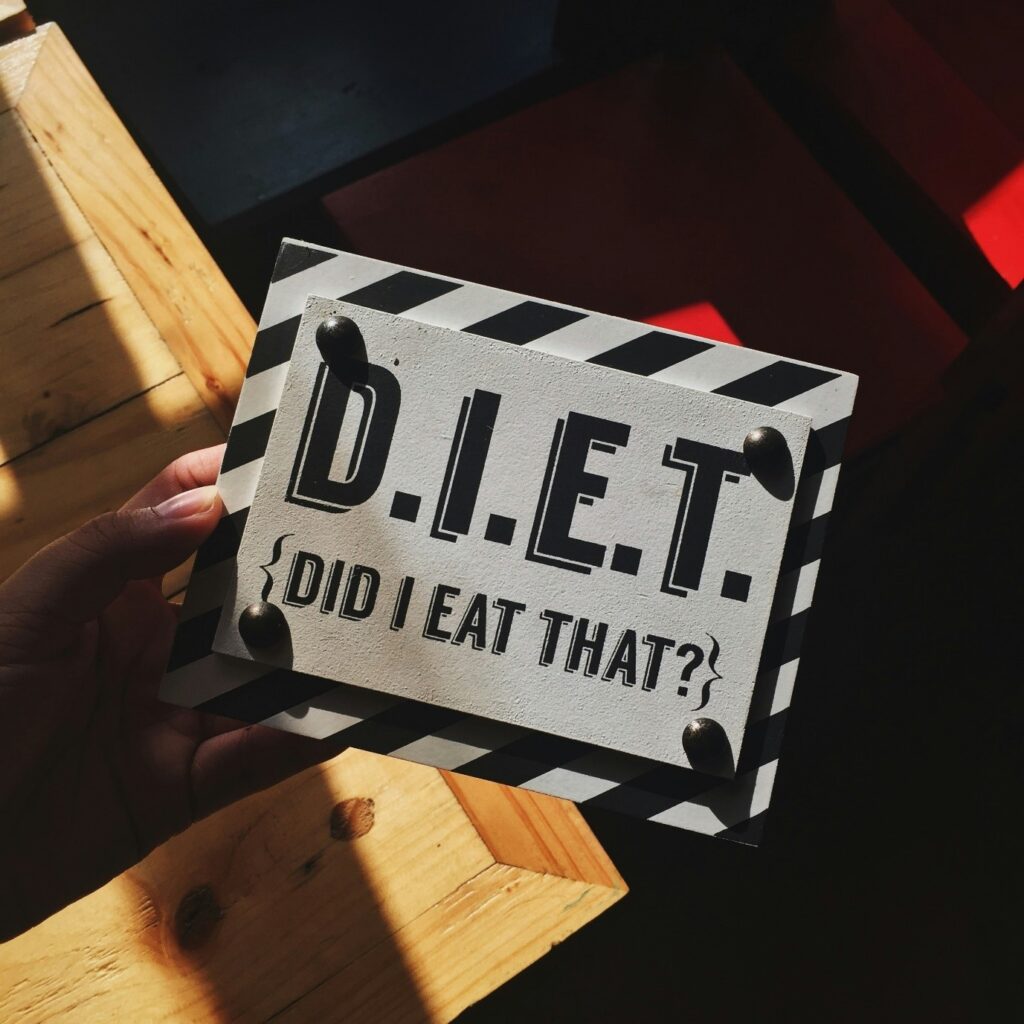
Conclusion
Reaching 50 does not mean that you need to slow down; you have completed the milestones, and there are more to come. It is time to take charge of your health with smart choices in your diet.
By focusing on the five vital nutrients, calcium, vitamin D, magnesium, protein, and omega-3 fatty acids, your bones will gain strength and vitality. To make all the transitions smoother at this age, focus more on the diet, which makes your bones strong and reduces the risks of osteoporosis.
Just make small, consistent choices about your diet, eat healthier and nutritious foods, and your body will thank you with energy, strength, and vitality for years to come.
Want to know more? Read the article on healthabulous, “Hormonal Imbalance Symptoms Every Woman Should Watch For (and How to Fix Them Naturally)” and build the habits that will help you carry through every stage of your life gracefully.
FAQs
How can I increase my energy after 50?
You can boost your energy naturally after 50 by keeping yourself hydrated, getting a good night’s sleep, a nutrition-rich diet with essential nutrients such as calcium, vitamin D, magnesium, protein, and omega-3 fatty acids and regular exercise.
How much calcium should I need as a woman aged 50?
The recommended daily dose of calcium is 1,200 mg from a mix of foods and supplements (if needed).
Can too much calcium be harmful?
Yes! Balance is a key. Excess calcium from supplements can lead to kidney stones and cardiovascular risks.
Are supplements recommended at the age of 50?
It is always best to get nutrients from whole foods. If your dietary intake is low, talk to your doctor about the supplements of calcium, vitamin D, and omega-3 fatty acids.
Being a vegetarian, how can I complete my daily protein intake?
Beans, lentils, peas, and chickpeas have a good amount of protein. You can take protein from other sources to complete your daily intake.
References
- Erdélyi A, Pálfi E, Tűű L, Nas K, Szűcs Z, Török M, Jakab A, Várbíró S. The Importance of Nutrition in Menopause and Perimenopause-A Review. Nutrients. 2023 Dec 21;16(1):27. doi: 10.3390/nu16010027. PMID: 38201856; PMCID: PMC10780928.
- Iqbal J, Zaidi M. Understanding estrogen action during menopause. Endocrinology. 2009 Aug;150(8):3443-5. doi: 10.1210/en.2009-0449. PMID: 19622779; PMCID: PMC2717878.
- Zarzour F, Didi A, Almohaya M, Kendler D. Cardiovascular Impact of Calcium and Vitamin D Supplements: A Narrative Review. Endocrinol Metab (Seoul). 2023 Feb;38(1):56-68. doi: 10.3803/EnM.2022.1644. Epub 2023 Feb 16. PMID: 36792577; PMCID: PMC10008654.
- Bohon TM, Goolsby MA. The Role of Vitamin D Supplements in Women’s Health. Clin Med Insights Womens Health. 2013 Oct 20;6:67-70. doi: 10.4137/CMWH.S11067. PMID: 24665216; PMCID: PMC3941188.
- Raymond-Lezman JR, Riskin SI. Benefits and Risks of Sun Exposure to Maintain Adequate Vitamin D Levels. Cureus. 2023 May 5;15(5):e38578. doi: 10.7759/cureus.38578. PMID: 37284402; PMCID: PMC10239563.
- Rondanelli M, Faliva MA, Tartara A, Gasparri C, Perna S, Infantino V, Riva A, Petrangolini G, Peroni G. An update on magnesium and bone health. Biometals. 2021 Aug;34(4):715-736. doi: 10.1007/s10534-021-00305-0. Epub 2021 May 6. PMID: 33959846; PMCID: PMC8313472.
- Laron Z. Insulin-like growth factor 1 (IGF-1): a growth hormone. Mol Pathol. 2001 Oct;54(5):311-6. doi: 10.1136/mp.54.5.311. PMID: 11577173; PMCID: PMC1187088.
- Groenendijk I, Grootswagers P, Santoro A, Franceschi C, Bazzocchi A, Meunier N, Caille A, Malpuech-Brugere C, Bialecka-Debek A, Pietruszka B, Fairweather-Tait S, Jennings A, de Groot LCPGM. Protein intake and bone mineral density: Cross-sectional relationship and longitudinal effects in older adults. J Cachexia Sarcopenia Muscle. 2023 Feb;14(1):116-125. doi: 10.1002/jcsm.13111. Epub 2022 Nov 8. PMID: 36346154; PMCID: PMC9891984.
- Kavyani Z, Musazadeh V, Fathi S, Hossein Faghfouri A, Dehghan P, Sarmadi B. Efficacy of the omega-3 fatty acids supplementation on inflammatory biomarkers: An umbrella meta-analysis. Int Immunopharmacol. 2022 Oct;111:109104. doi: 10.1016/j.intimp.2022.109104. Epub 2022 Jul 30. PMID: 35914448.
- Morris AL, Mohiuddin SS. Biochemistry, Nutrients. [Updated 2023 May 1]. In: StatPearls [Internet]. Treasure Island (FL): StatPearls Publishing; 2025 Jan-. Available from: https://www.ncbi.nlm.nih.gov/books/NBK554545/


